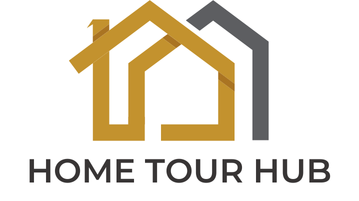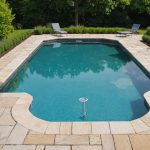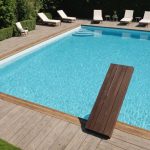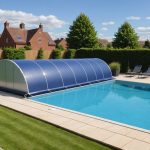Smart home technology transforms daily living, but integrating it with classic UK architecture poses unique challenges. This guide offers valuable insights and practical tips for harmoniously blending modern innovations into timeless designs. Embrace the benefits of smart automation while preserving the authenticity of your historic home. Explore solutions that respect architectural heritage without sacrificing modern comfort. Discover how to elevate your living space seamlessly!
Understanding Smart Home Technology in Traditional Settings
Integrating smart home technology into traditional architecture requires careful planning. The challenge lies in enhancing functionality without compromising the aesthetic value of heritage properties. Smart technology offers numerous benefits, such as energy efficiency, security, and convenience, which can significantly improve the living experience in older homes.
Dans le meme genre : Essential Tips for Properly Maintaining Your Rural UK Septic Tank
When considering integration techniques, it's essential to focus on wireless solutions. These minimize invasive installations and preserve the architectural integrity of the property. Devices like smart thermostats and lighting systems can be seamlessly integrated, offering control without altering the home's original design. Moreover, smart security systems can enhance safety while remaining discreet.
Maintaining the architectural integrity of traditional settings is crucial. It's important to select technology that complements the existing style. For instance, choosing smart switches that match the home's original fixtures ensures a cohesive look. Additionally, hiding cables and devices in furniture or behind walls can help maintain the visual appeal.
Cela peut vous intéresser : Effective Strategies to Combat Limescale in Hard Water Areas of the UK
In summary, smart home technology can be successfully integrated into traditional settings by prioritizing non-invasive solutions and ensuring that the aesthetics remain intact. This approach allows homeowners to enjoy modern conveniences while preserving the charm of their heritage properties.
Design Ideas for Integrating Smart Features
Exploring design integration within traditional UK architecture requires a balance between modern technology and classic aesthetics. This section will delve into how smart home features can be seamlessly incorporated into heritage properties.
Blending Technology with Classic Design
To successfully blend technology with classic design, it's essential to consider the visual impact of smart devices. Opt for devices with a minimalist design that complement the existing architecture. For instance, smart thermostats with sleek finishes can be installed in less conspicuous areas, maintaining the room's traditional charm.
Choosing Compatible Smart Devices
When selecting smart devices for traditional settings, focus on those that offer both functionality and aesthetic compatibility. Devices like smart bulbs with adjustable hues can mimic the warm glow of vintage lighting. Additionally, smart speakers with wooden finishes can harmonize with antique furniture, ensuring a cohesive look.
Creative Aesthetic Solutions
Creative solutions can help maintain the aesthetic value of traditional homes while integrating smart features. Consider hiding smart hubs and routers within furniture or behind decorative elements. This approach preserves the classic appearance while ensuring connectivity. Moreover, using custom enclosures for smart panels can disguise their modern appearance, aligning them with the home's style.
By thoughtfully integrating smart home features, homeowners can enjoy modern conveniences without compromising the unique character of their traditional UK architecture.
Case Studies of Successful Integrations
Exploring case studies of successful smart home integrations in traditional settings provides valuable insights. Notable projects illustrate how modern technology can enhance classic architecture without diminishing its charm.
One such example is the integration of smart technology in a Victorian townhouse in London. The project involved installing smart lighting and heating systems that complemented the home's original features. The architect emphasized the importance of choosing devices that blend seamlessly with the existing decor, ensuring a harmonious look.
Interviews with homeowners reveal that non-invasive installations were crucial to maintaining the property's integrity. Wireless solutions were preferred to avoid drilling into the historic walls. This approach not only preserved the architectural value but also allowed for easy upgrades as technology evolved.
A key lesson from these successful integrations is the importance of planning. Architects and homeowners stressed the need for a clear vision of how technology will be used and its impact on the home's aesthetics. By prioritizing compatibility and minimalism, these projects achieved a balance between functionality and style.
These case studies demonstrate that with thoughtful planning and the right technology, traditional homes can benefit from modern conveniences while retaining their unique character.
Common Challenges and Solutions
Integrating smart home technology into traditional architecture can present various challenges. However, with careful planning and thoughtful solutions, these obstacles can be effectively managed.
Addressing Aesthetic Concerns
One major concern is maintaining the visual harmony between modern devices and traditional settings. The solution lies in selecting smart devices with minimalist designs that complement existing decor. For instance, opting for smart lighting systems with adjustable hues can mimic the warm glow of vintage lighting, preserving the home's aesthetic appeal. Additionally, hiding devices within furniture or behind decorative elements can help maintain the classic look.
Overcoming Technical Limitations
Technical limitations often arise due to the structural constraints of older buildings. Wireless solutions are key in this context, as they minimize invasive installations. Smart home integration can be achieved without altering the building's fabric by using wireless systems for lighting, heating, and security. Furthermore, ensuring robust connectivity through strategically placed routers is essential for seamless operation.
Navigating Regulatory Restrictions
Navigating regulatory restrictions is another challenge in smart home integration within heritage properties. Compliance with building regulations and preservation guidelines is crucial. Collaborating with architects and specialists familiar with these regulations can ensure that the integration respects the property's historical value. This approach not only preserves the architectural integrity but also aligns with legal requirements.
Expert Opinions and Future Trends
Incorporating smart home technology into historic settings is a nuanced challenge. Expert insights reveal that the future of smart homes in these environments hinges on balancing innovation with preservation. Industry leaders emphasize the importance of developing technologies that respect the architectural heritage while enhancing functionality.
Perspectives from Industry Experts
Experts predict a surge in future trends focusing on non-invasive solutions. Wireless technology is anticipated to advance, offering seamless integration without altering historic structures. Furthermore, experts foresee a rise in customisable smart devices that blend with traditional aesthetics, allowing homeowners to maintain their property's unique character.
Emerging Technologies
Emerging technologies like artificial intelligence and machine learning are set to revolutionize smart home integration. These innovations promise more intuitive systems that adapt to the homeowner's lifestyle, providing enhanced convenience and efficiency. Additionally, advancements in energy-saving technologies are expected to play a crucial role in reducing the environmental impact of older buildings.
Predictions for the UK Market
The UK market is poised for significant growth in smart home integration within historic settings. Experts anticipate increased collaboration between tech companies and conservationists to develop solutions that respect both modern needs and historical preservation. As these partnerships evolve, the integration of smart technology into traditional architecture is likely to become more sophisticated and widespread.
















